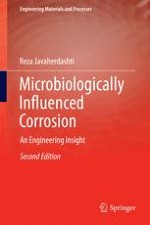2017 | OriginalPaper | Buchkapitel
6. How MIC Is Detected and Recognised?
verfasst von : Reza Javaherdashti
Erschienen in: Microbiologically Influenced Corrosion
Aktivieren Sie unsere intelligente Suche, um passende Fachinhalte oder Patente zu finden.
Wählen Sie Textabschnitte aus um mit Künstlicher Intelligenz passenden Patente zu finden. powered by
Markieren Sie Textabschnitte, um KI-gestützt weitere passende Inhalte zu finden. powered by
